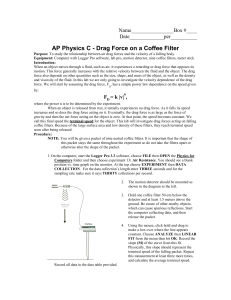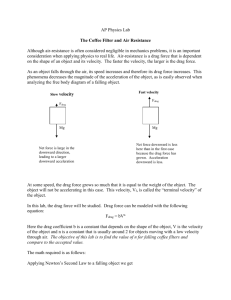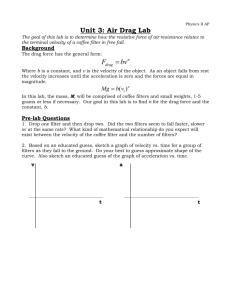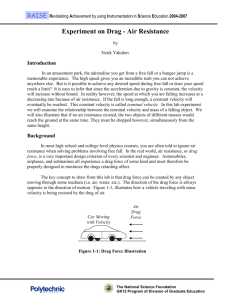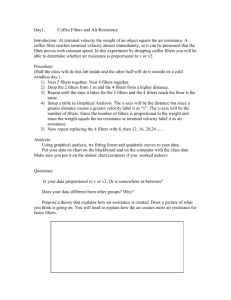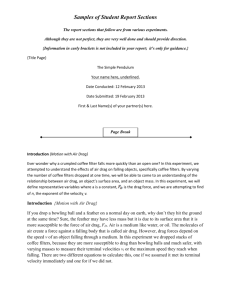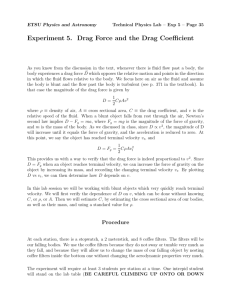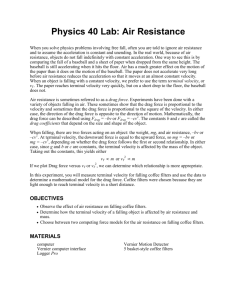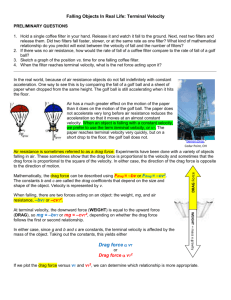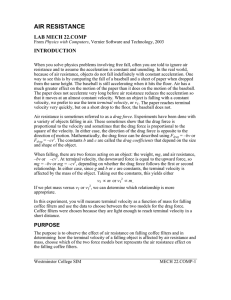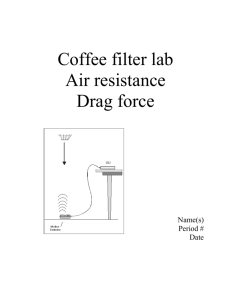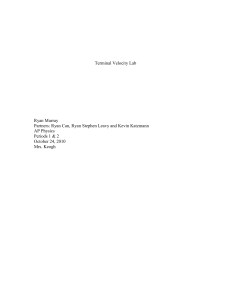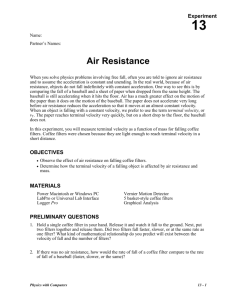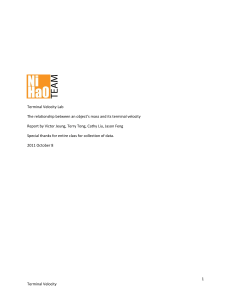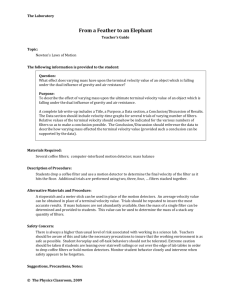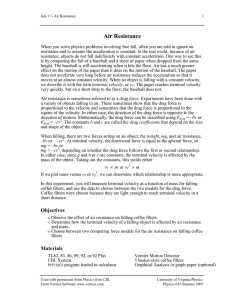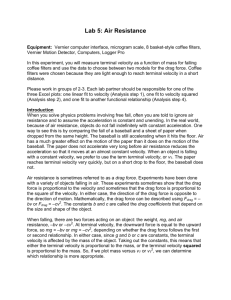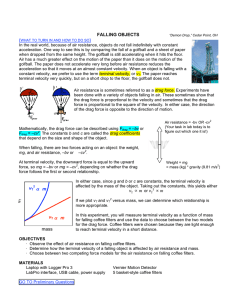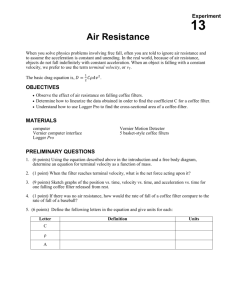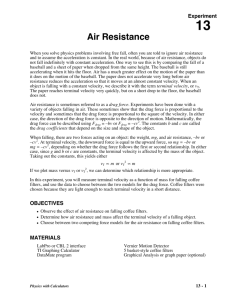LAB 5 Drag Force on a Coffee Filter
advertisement
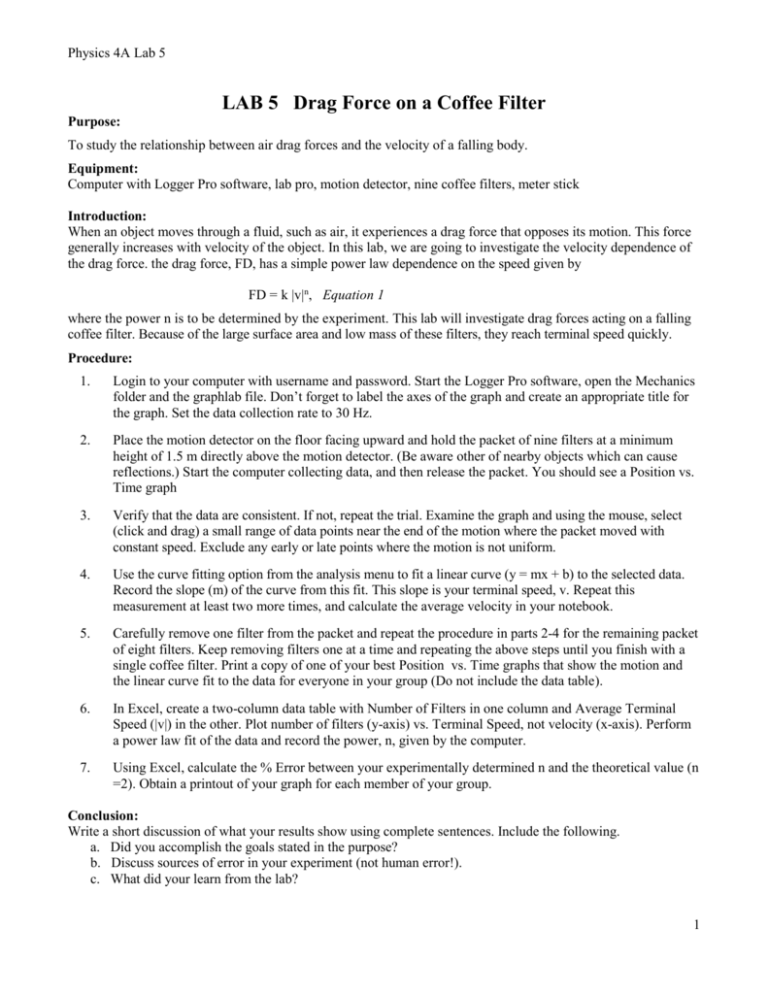
Physics 4A Lab 5 LAB 5 Drag Force on a Coffee Filter Purpose: To study the relationship between air drag forces and the velocity of a falling body. Equipment: Computer with Logger Pro software, lab pro, motion detector, nine coffee filters, meter stick Introduction: When an object moves through a fluid, such as air, it experiences a drag force that opposes its motion. This force generally increases with velocity of the object. In this lab, we are going to investigate the velocity dependence of the drag force. the drag force, FD, has a simple power law dependence on the speed given by FD = k |v|n, Equation 1 where the power n is to be determined by the experiment. This lab will investigate drag forces acting on a falling coffee filter. Because of the large surface area and low mass of these filters, they reach terminal speed quickly. Procedure: 1. Login to your computer with username and password. Start the Logger Pro software, open the Mechanics folder and the graphlab file. Don’t forget to label the axes of the graph and create an appropriate title for the graph. Set the data collection rate to 30 Hz. 2. Place the motion detector on the floor facing upward and hold the packet of nine filters at a minimum height of 1.5 m directly above the motion detector. (Be aware other of nearby objects which can cause reflections.) Start the computer collecting data, and then release the packet. You should see a Position vs. Time graph 3. Verify that the data are consistent. If not, repeat the trial. Examine the graph and using the mouse, select (click and drag) a small range of data points near the end of the motion where the packet moved with constant speed. Exclude any early or late points where the motion is not uniform. 4. Use the curve fitting option from the analysis menu to fit a linear curve (y = mx + b) to the selected data. Record the slope (m) of the curve from this fit. This slope is your terminal speed, v. Repeat this measurement at least two more times, and calculate the average velocity in your notebook. 5. Carefully remove one filter from the packet and repeat the procedure in parts 2-4 for the remaining packet of eight filters. Keep removing filters one at a time and repeating the above steps until you finish with a single coffee filter. Print a copy of one of your best Position vs. Time graphs that show the motion and the linear curve fit to the data for everyone in your group (Do not include the data table). 6. In Excel, create a two-column data table with Number of Filters in one column and Average Terminal Speed (|v|) in the other. Plot number of filters (y-axis) vs. Terminal Speed, not velocity (x-axis). Perform a power law fit of the data and record the power, n, given by the computer. 7. Using Excel, calculate the % Error between your experimentally determined n and the theoretical value (n =2). Obtain a printout of your graph for each member of your group. Conclusion: Write a short discussion of what your results show using complete sentences. Include the following. a. Did you accomplish the goals stated in the purpose? b. Discuss sources of error in your experiment (not human error!). c. What did your learn from the lab? 1
